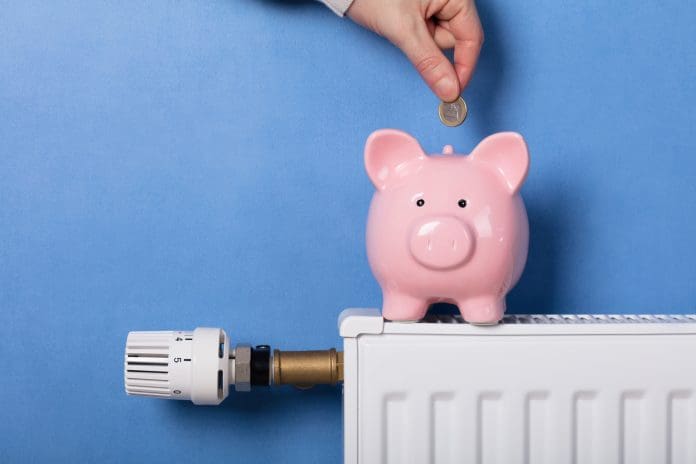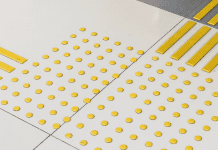With COP28 wrapping up and new research from the UKGBC and RICS warning the built environment sector is currently off track to reduce emissions in line with the net-zero 2050 target, Wondrwall explores why AI-powered energy savings are essential to solving decarbonisation challenges
The built environment generates 40% of annual global CO2 emissions, far higher than any other individual sector.
Of those total emissions, building operations are responsible for 27% annually, highlighting the potential to make a significant, tangible impact on climate change by modifying behaviours, embracing technology, and choosing renewable energy sources.
Yet, we are continually faced with hurdles in the form of a perpetual lack of grid capacity alongside slowing economies, expanding populations, and persistent fuel poverty amid a climate emergency.
The UK’s CO2 emissions have decreased by 23% from 2004 to 2021
We are entering an era of unprecedented unpredictability with our climate, as well as our energy bills.
Looking back, the UK’s CO2 emissions from 2004 to 2021 have actually decreased by 23%.
However, as we continue to accelerate our path to renewable energy sources, our electricity bills pay the price. The average annual energy bill is predicted to increase a staggering 368% from £522 in 2004 to £1,923 from January next year.
We all have a responsibility to reduce our carbon footprint, however, not to the detriment of our financial health and wellbeing. New technologies and forward-thinking policies are key to overcoming these challenges. That’s why we are looking to create a future where both low carbon and low costs are possible.
Enabling access to democratised and decarbonised homes
The government has a fantastic opportunity to deliver a win-win for consumers and the country by refocusing finite resources on decentralised energy technology at the distribution network level, invigorating investor confidence and demonstrating a clearer path for delivering net zero faster and at less cost to households.
If we are to build 1.5m homes in the next five years that are both affordable and low carbon, then we have to consider different solutions to the problem – we cannot simply work in the same way as we have in the past.
What’s more, reduced energy bills as a vehicle to reduce carbon emissions have never been as important as it is right now.
The Future Homes Standard is a good step in the right direction, but in its current state, it risks propagating behaviour that isn’t getting us to net zero. People want climate-friendly homes, but they don’t want to pay more. But there is a solution to be net zero now.
AI-powered energy savings are critical to achieving emissions targets
Empowering the individual household to be their own generator is pro-consumer, pro-environment and pro-industry.
To deploy decentralised energy effectively in our homes, we need the technology to manage it, store it and sell it when needed back to the grid.
It was encouraging to see £500m investment announced for AI innovation centres in the UK in the Autumn statement last month, as we know AI-powered energy savings are critical to achieving our nations emissions targets as well having the potential to improve the health and welfare of local communities.
We know this because Wondrwall is committed to creating a future where sustainable carbon-free living is achievable and accessible, thanks in large, to AI.
Our recent £100m investment programme underscores the private sector opportunity to position the UK as a world leader in creating net-zero energy homes.
But what does this look like in practice, and how does the technology work?
Our fully integrated Home Energy Management system analyses over 20,000 data points per day and uses self-learning technology to reduce energy consumption for heating, cooling, lighting and security when it is not needed and ramp-up use when it’s needed most.
It also makes use of flexibility services, identifying the optimum time to buy and sell surplus renewable energy back to the grid delivering economic benefits to homeowners.
By making the home intelligent, we can make homes more energy efficient, helping to balance demand and freeing up network capacity to connect other low-carbon technologies like renewable generation, storage and EV charge points without the need for costly reinforcement.
Giving UK homes a brain with technology that harmonises energy generation, storage, and use, means we can control our home energy systems, paving the way for ultra-efficient carbon net-zero living.
Reducing household bills through AI technology
Our electricity consumption is forecast to triple through the decarbonisation of heat and transport. With the increased use of EVs and electrical heating technologies, we’re at risk of not sufficiently boosting the energy efficiency of homes while electricity consumption increases. As we transition the grid from gas to renewables, the entire model for how energy is consumed will need to change.
Currently, we are a supply-orientated model of energy usage. However, renewables, such as wind and solar, are intermittent, meaning that we rely on more expensive, carbon-emitting generation when the sun isn’t shining.
To combat this, we must transition towards a consumption-based model that incentivises more home generation and greater energy efficiency, rewarding consumers who draw less energy from the grid.
Batteries can help with these energy deficits, alongside intelligent technology solutions to manage the complexity of energy storage. Thanks to solar technology, there is a future where half of the year, your house is running for free in the summer.
The other half of the year, as well as using any surplus stored energy from the warmer months, it needs to buy energy from the grid at off-peak prices.
Thanks to technology and AI, the house is running on a system where much of the incurred energy costs during the winter are cancelled out from revenue gained in the summer, where your house has been able to sell surplus energy when demand is high for the best rates.
This means half of the year having no bills at all, and the other seeing bills significantly reduce to almost nothing in many cases. With exported revenue, the best cases end up with negative bills. Your house is a mini powerplant running itself.
AI powered tech allows homeowners to go one step further than just a smart home app. Now no longer needing human input, machine learning and sensory technology move us away from smart homes and into the age of intelligent living.
Self-learning technology means decarbonisation savings are optimised, and net zero homes are made possible.
Daniel Burton
CEO and founder
Wondrwall Group

















